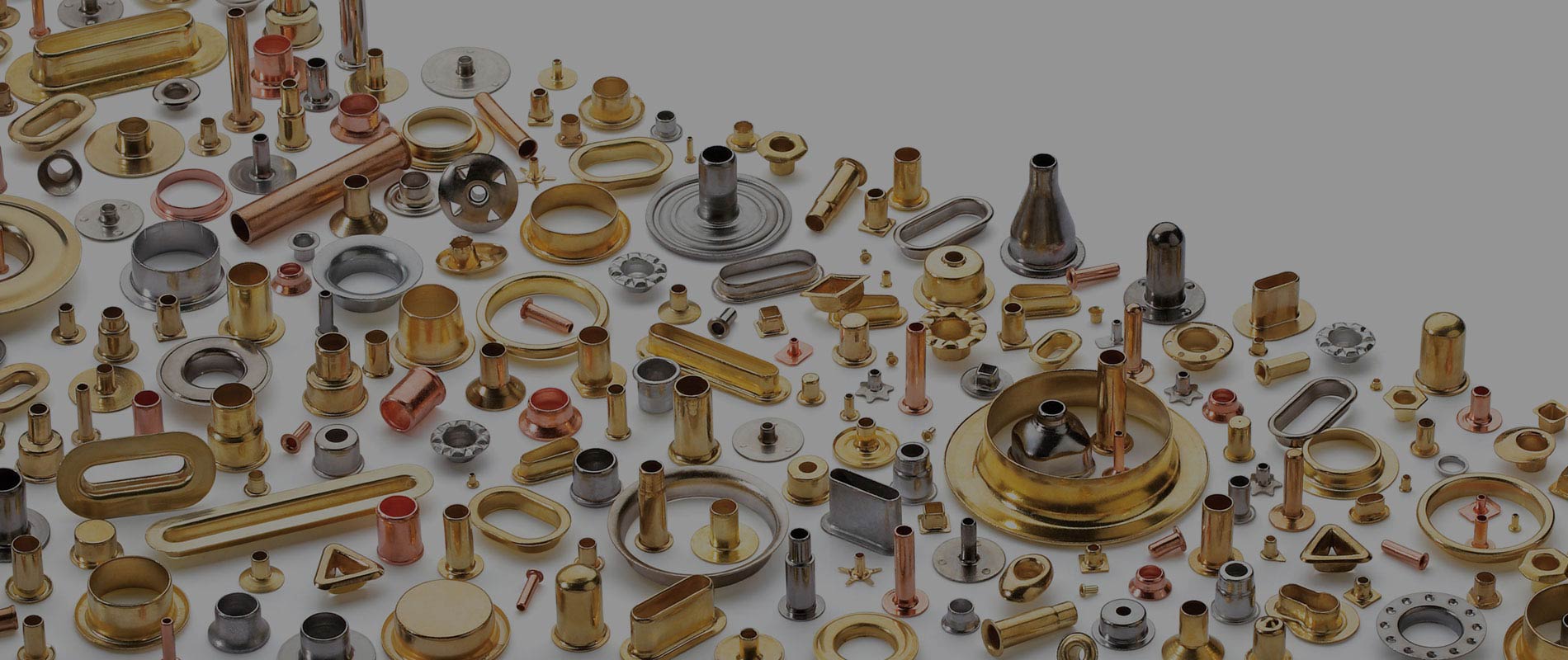- January 9, 2023
Common Eyelet Measurement Terms
We've all found ourselves in a situation where we need assistance in dealing with selecting an eyelet for a new project. Most of the time, in such situations, the Siska Inc. customer representative will use unfamiliar terminologies to refer to essential parts of an eyelet. In addition, the Siska Inc. website has many size charts that use these terms to describe the important measurements of an eyelet. Knowing these terms and thus the important measurements will assure you that you have selected the correct eyelet for your application. Let's begin with the basics. In the United States, the measurements are stated in thousands of an inch. 1/4 of an inch would be .250 Outside of the United States, the metric system is used and eyelets dimensions are stated in mm (millimeters)
Parts of an Eyelet
The flange: This is the outward-facing area of the eyelet. It is normally the most noticeable since this is the part that you see after it is set in your work.
The Barrel: This is the tubular part of the eyelet that goes through the material. The barrel has a wall whose thickness is equivalent to the metal used in the production of the part.
Measuring the Eyelet
It is crucial to find out the dimensions you want to use during your application. Did you know that the dimensions of an eyelet and a grommet are measured with three decimal places (in thousandths of inches)? It is, therefore, recommended to use the right tools and terms when determining dimensions. A caliper is the right tool to use when measuring dimensions. Here are four terms you need to know in regards to eyelet measurements.
Outside Diameter Of the Barrel (O.D.)
The O.D. or outside diameter refers to the barrel of the eyelet. It s the most important dimension. The primary purpose of the eyelet is to reinforce a hole or secure multiple parts together. To determine the correct barrel diameter to use you must know what the hole size is that is in your application. Then you should subtract a minimum of .004 (four thousands of an inch) to a maximum of .015 (fifteen thousands of an inch) to determine the correct barrel O.D. of the eyelet. For example, you have a piece of plastic that is 1/8 of inch thick (.125) and has a hole of 1/4 inch (.250), For the eyelet to fit correctly inside the .250 inch hole, subtract .004 from the .250 and the result is .246 . The optimum eyelet would have the correct barrel OD of .246. Our Industrial eyelets were produced to fit in hole sizes of 1/16", 3/32", 1/8", 5/32", 3/16", 7/32", 1/4" They all have barrel diameters .004 less than these hole sizes and come in many lengths. Check out our industrial eyelet page here.
Length Under Flange (L.U.F.)
The length under the flange is the second most important measurement. It is as expected, the length measured from under the flange to end of the barrel. To hold securely the barrel must be long enough to go completely thru the work and the washer (if one is being used) and have at least 2/32" (.063) sticking out the other side of your item to allow for a good roll set or scored set. Our Industrial Eyelets are made in graduated lengths of 1/32" which makes selecting the correct length eyelet very easy.
Flange Diameter (F.D.)
The flange's diameter is usually a bigger aesthetic preference than the rest of the dimensions. This is because the eyelet flange is one of the most visible parts of a finished project. Alternatively, it is vital in scenarios where the part needs to be placed in flexible material. In such a case, it is recommended to use a large flange diameter that prevents the eyelet from sliding through the material.
Inside Diameter (I.D.)
The eyelet's diameter becomes relevant when you need to pass either a cord or rope through the hole. The I.D. can be easily determined by multiplying the thickness of the barrel wall by two, then subtracting the result from the outside diameter (O.D.) of the barrel. Keep in mind that the diameter of the hole is a little narrower than that of the I.D. of the barrel because in the manufacturing process the very end of the eyelet is slightly tapered in. After the eyelet is set, this slight deviation should disappear.
Choose the right eyelets and tools for your project at Siska Inc. to get your job done faster. Talk to us today and get the best in quality products and customer satisfaction.
